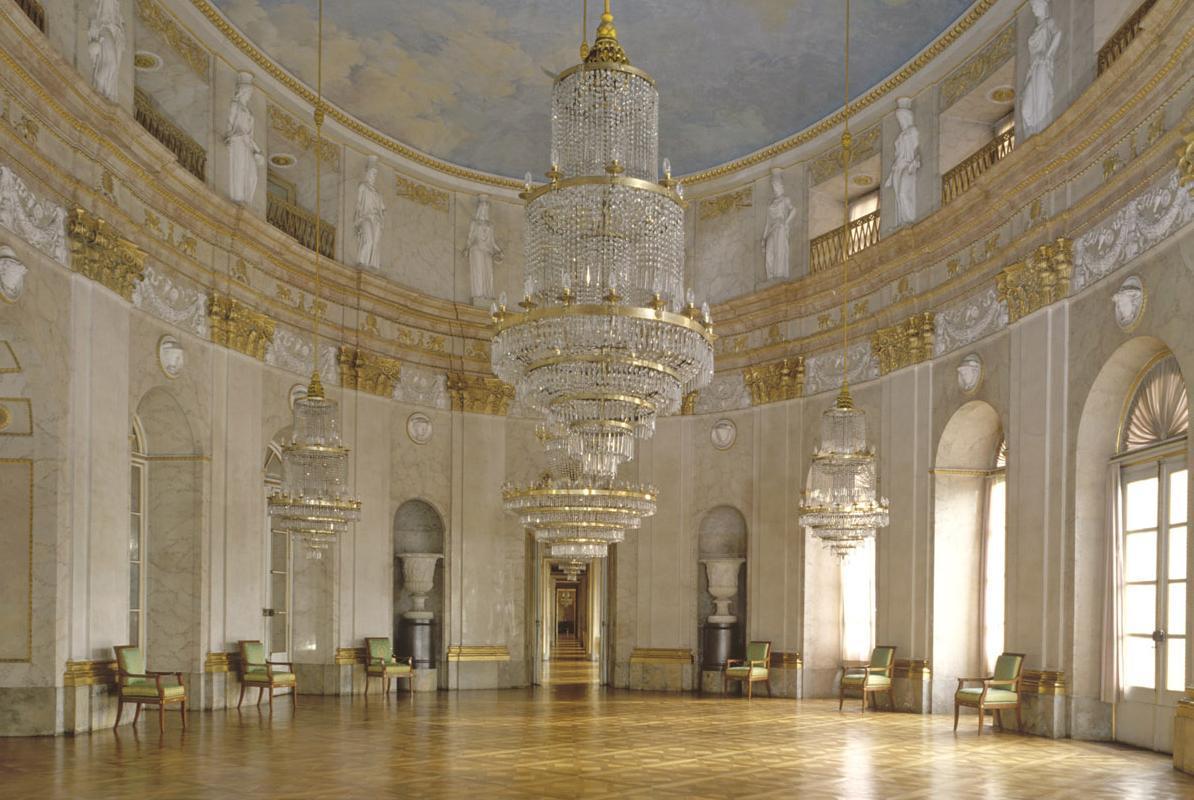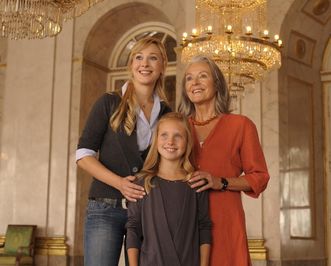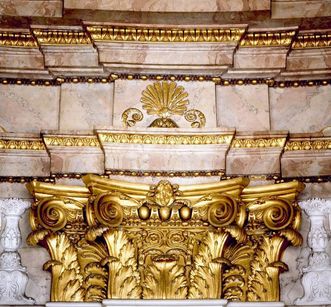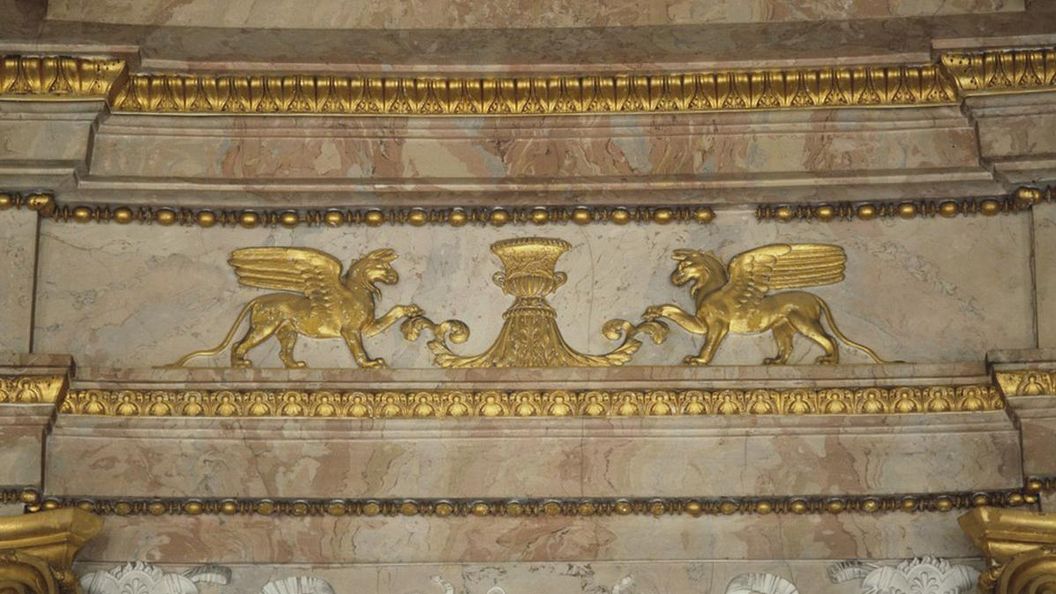A look to the heavens
The royal court architect, Nikolaus Friedrich von Thouret, was commissioned by King Friedrich I in 1815 to update the Baroque ceremonial hall at the center of the new central building. He replaced the existing ceiling vaults with a more lightly arched version. The new fresco depicts a blue sky with clouds and opens the space upward through an illusionistic style. The majestic chandeliers are seemingly carried by a flying eagle and wild mallard ducks.






